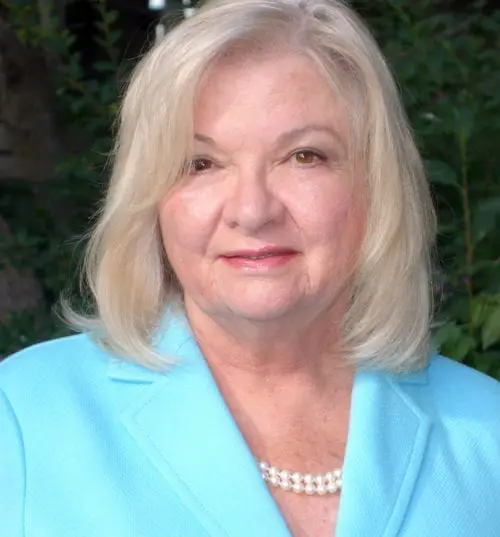
If you asked the 11-year-old Phil Kean what he wanted to be when he grew up, he would have told you an architect.
It’s not often someone actually pursues a path they identify at such a young age, but Kean — who is one of the largest custom homebuilders in Florida — has done that and then some. His design/build firm, Phil Kean Design Group, includes interior design, as well as a new offshoot offering a line of semi-custom homes dubbed WAYCOOL Homes.
An early advocate of green building, Kean has amassed an impressive number of accolades and awards from industry groups, consumers and the media for construction, architecture, design and energy efficiency. His homes have garnered a number of Best in American Living Awards from the National Association of Home Builders (NAHB) and he often receives top honors in multiple categories at the Southeast Building Conference (SEBC). In fact, his homes earned more than 20 top awards at the 2012 SEBC. In 2013, he was the National Association of Home Builder’s Custom Home Builder of the Year. Even his firm’s service received a “Best of” nod from home design site Houzz.
Spend even a few minutes with Kean and his easygoing, engaging manner and ability to translate his vision for homes and architecture into a language that the average person can understand — a rare skill for an architect — impresses.
Although his resume includes a master’s degree in architecture and a Master of Business Administration from Washington University in St. Louis and studies at Harvard, some of his most important skills were learned outside the classroom. New Home Source sat down with Kean to learn more about these life lessons, green construction and WAYCOOL Homes.
New Home Source: Your father was a builder. How much did growing up in the industry influence you?
Kean: When I was little, sometimes my dad would give my mom a break and take me to work with him. I was about 7 years old. You couldn’t do that today. He used to take me to the job site and hand me plans and I would go around finding the walls on the plans. So, at 7 I could read a set of blueprints. Having that experience made me very visual between a set of drawings and what it would look like.
Also, in college, I worked as a carpenter during the summer and participated in a program that taught me how to become a union carpenter. Other summers I worked as a laborer and as a roofer. I think it makes you a better architect when you know how things go together. Also, it makes you appreciate the tradesmen who work on your jobs; they are real craftspeople. My dad was a hands-on kind of builder; he wasn’t afraid to get dirty or make me get dirty.
NHS: You have a very strong business sense and entrepreneurial focus. At one time you had a custom rubber stamp enterprise — called The Stamp Cabana, which eventually had seven stores. How does that relate to architecture and construction?
Kean: When I was working on my MBA, I started a retail business and I think the retail piece sort of taught me about business. When you’re in retail, it’s about customer service. That was the lesson in that. If you have a happy customer, they come back. That was also a good education as far as learning to deal with lots of different people all the time. I think that’s important. Not only is this business (architecture and construction) about building houses, it’s also about taking care of people’s dreams. Making the most of their dreams, not trying to make it all about you.
NHS: You have received a number of awards for energy efficiency and you built the Florida Green Building Coalition’s 2012 Highest Scoring Certified Green Home. How did the green building path evolve for you?
Kean: Green building is really about best practices in construction. Before there was this term for it, we were doing it. We were putting in the best windows and the best insulation before anybody was calling it green. The “green” term reminds me of when “low fat” became popular and we started seeing low fat on everything. We were always doing green anyway, because it made sense. It was minimizing waste and thinking through all the parts and how (homes) could be healthier. Now, there is just much more attention on it. To build a green home, I don’t think you have to spend more. If you are building with best practices in construction, you will be able to certify that house green.
NHS: Is there a net zero house on the horizon for the Phil Kean Design Group?
Kean: We have two LEED Platinum homes. I am thinking about doing my next show house as net zero. Net zero is expensive. I’ve designed one but I haven’t built it, so I have done the architecture and I might do a show house just to get one under my belt. Financially it’s better to have a client, but the process of learning all the parts is easier to do on your own terms.
NHS: Tell us about WAYCOOL Homes.
Kean: I run marathons and WAYCOOL Homes was an idea I came up with on a long run one morning. It came across my mind that I had designed a bunch of homes over the years that had never been built, so I had this portfolio of homes that were cool and fun. Some were plans I designed as a spec home or a show home that no one had ever hired me to build. Still, I really liked them, so I put them together, sort of like stock plans.
They are thoughtfully designed, but less expensive to build since they use stock sizes and standard openings, not a lot of custom stuff. Still, they have a great wow factor. I also work with builders in some areas to produce WAYCOOL Homes. The costs really vary depending on the labor force and codes in a specific area. So, while a WAYCOOL home in Alabama might be about $100 a square foot, it could be $150 in central Florida and even more in Miami or parts of the northeast.
NHS: What do you see in the future for construction?
Kean: I think we are going to see more and more green. I do think that’s not going away and more and more codes require green. What I don’t know is that if the economy starts to hum up again, will we go big again?

Camilla McLaughlin is an award-winning writer specializing in house and home. Her work has appeared in leading online and print publications, such as Yahoo! Real Estate, Unique Homes magazine and Realtor magazine. She has also freelanced for the Associated Press.
 Smaller Lots Make New Homes Affordable
Smaller Lots Make New Homes Affordable